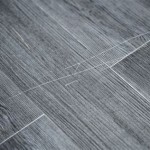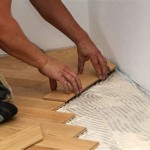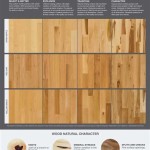Yoga Studio Flooring Ideas: Creating the Ideal Practice Space
Selecting the appropriate flooring for a yoga studio is a critical decision that impacts the comfort, safety, and aesthetic appeal of the space. The flooring choice influences the yoga practitioner experience, affecting grip, stability, and cushioning. It also contributes significantly to the acoustics and overall atmosphere of the studio. Considerations extend beyond surface texture; durability, maintenance requirements, and the ability to withstand consistent use are paramount. This article explores a range of flooring options suitable for yoga studios, detailing their characteristics, advantages, and potential drawbacks.
Considerations Before Selecting Yoga Studio Flooring
Before evaluating specific flooring materials, it's important to define the unique requirements of the yoga studio. These requirements will directly influence the selection process and ensure the chosen material aligns with the intended usage. Factors such as the type of yoga practiced, the anticipated class size, and the overall aesthetic vision for the studio should be thoroughly considered.
The type of yoga practiced is a primary determinant. Vigorous styles like Ashtanga or Power Yoga demand flooring that offers excellent grip and stability, minimizing the risk of slipping during dynamic movements. Restorative or Yin Yoga practices, on the other hand, prioritize comfort and cushioning. Heated yoga styles, such as Bikram, require flooring that is moisture-resistant and easy to clean. The material must withstand elevated temperatures and humidity levels without warping or degrading.
Anticipated class size and frequency of use also play a role. High-traffic studios need more durable flooring options that can withstand daily wear and tear. The flooring should be resistant to scratches, dents, and staining. Regular cleaning and maintenance are necessary to preserve its appearance and hygiene. The studio's budget is also a key consideration. While some flooring options may offer superior performance, their cost may be prohibitive. Balancing performance with affordability is essential.
Aesthetic considerations are also vital. The flooring should complement the overall design of the studio and contribute to the desired ambiance. Natural materials like wood or bamboo can create a warm and inviting atmosphere, while more modern materials like rubber or vinyl can provide a sleek and contemporary look. The color and texture of the flooring can also influence the perceived size and spaciousness of the studio. Light-colored flooring can make a small studio feel larger, while textured flooring can add visual interest.
Finally, the underfloor should be assessed for its suitability. In some cases, the existing subfloor may need to be leveled or reinforced before installing new flooring. This preparation can add to the overall cost of the project, but it is critical to ensure the longevity and performance of the flooring.
Popular Flooring Options for Yoga Studios
Several flooring materials are commonly used in yoga studios, each offering unique advantages and disadvantages. The selection process should be guided by the specific needs and priorities of the studio, considering factors such as durability, comfort, aesthetics, and cost.
Hardwood Flooring: Hardwood flooring provides a classic and aesthetically pleasing option for yoga studios. It offers a warm and inviting atmosphere and is relatively durable when properly maintained. However, hardwood can be expensive and requires regular sealing and refinishing to prevent moisture damage and wear. The smooth surface can also be slippery, particularly during dynamic yoga practices, which may necessitate the use of yoga mats with enhanced grip.
The type of hardwood used can also affect its suitability for a yoga studio. Harder woods, such as maple or oak, are more resistant to scratches and dents than softer woods like pine. Engineered hardwood is an alternative to solid hardwood that offers greater stability and resistance to moisture. It consists of a thin layer of hardwood veneer bonded to a core of plywood or fiberboard.
Bamboo Flooring: Bamboo is a sustainable and eco-friendly flooring option that is becoming increasingly popular in yoga studios. It is a fast-growing grass that regenerates quickly, making it a renewable resource. Bamboo flooring is also durable and resistant to moisture, but it can be susceptible to scratching and denting. Like hardwood, bamboo can be slippery, so yoga mats with adequate grip are recommended.
There are different types of bamboo flooring available, including horizontal, vertical, and strand-woven. Strand-woven bamboo is the most durable option, as it is made by compressing bamboo fibers under high pressure. It is also more resistant to moisture and scratching than other types of bamboo flooring.
Cork Flooring: Cork is another environmentally friendly flooring option that is well-suited for yoga studios. It is a natural, renewable resource that is harvested from the bark of cork oak trees. Cork flooring is naturally cushioning, providing comfort for practitioners during floor poses. It is also slip-resistant and absorbs sound, creating a quieter and more peaceful atmosphere.
However, cork flooring is relatively soft and can be easily damaged by sharp objects or heavy furniture. It also requires regular sealing to prevent staining and moisture damage. The aesthetic of cork flooring may not appeal to all studios, as it has a distinct texture and appearance. But sealants now allow it to have a range of colours.
Rubber Flooring: Rubber flooring is a durable and resilient option that is ideal for high-traffic yoga studios. It is made from recycled rubber tires or synthetic rubber and is highly resistant to wear and tear. Rubber flooring provides excellent shock absorption and cushioning, reducing the impact on joints during dynamic movements. It is also slip-resistant and easy to clean.
However, rubber flooring can have a strong odor, particularly when it is first installed. The odor typically dissipates over time, but it can be unpleasant for some practitioners. Rubber flooring also has a more industrial look than other flooring options, which may not be suitable for all studios. Can be difficult to install.
Vinyl Flooring: Vinyl flooring is a versatile and affordable option that is available in a wide range of colors and patterns. It is durable, water-resistant, and easy to clean, making it a practical choice for yoga studios. Luxury vinyl plank (LVP) offers a more realistic wood or stone look than traditional vinyl flooring.
However, vinyl flooring can be less comfortable than other options and may not provide adequate cushioning for floor poses. It can also be susceptible to scratches and dents. Vinyl flooring is not as environmentally friendly as natural materials like bamboo or cork.
Carpet Flooring: Low-pile carpet can be used in a yoga studio. It provides some light cushioning and warmth. The carpet should be stain resistant and easy to clean to prevent smells. It is advisable to use yoga mats on top of the carpet for practice.
Foam Tiles: Foam yoga flooring has become popular in recent years. It provides an extremely cushioned surface. Foam is antimicrobial and slip-resistant. The interlocking tiles are easy to install and remove for cleaning.
Maintaining Yoga Studio Flooring
Regardless of the flooring material chosen, regular maintenance is essential to preserve its appearance, hygiene, and longevity. Proper cleaning and care will not only extend the life of the flooring but also contribute to a healthier and more pleasant environment for yoga practitioners.
Daily cleaning should include sweeping or vacuuming to remove dust, dirt, and debris. This prevents the accumulation of particles that can scratch or damage the flooring. For hardwood, bamboo, and cork flooring, it is important to use a soft broom or vacuum with a brush attachment to avoid scratching the surface.
Regular mopping with a mild detergent and water is also necessary to remove spills and stains. It is important to use a pH-neutral cleaner that is specifically designed for the flooring material. Avoid using harsh chemicals or abrasive cleaners, as they can damage the surface. For hardwood and cork flooring, it is important to avoid over-wetting the surface, as this can cause warping or swelling. Make sure to have enough ventilation for drying.
Deep cleaning should be performed periodically to remove embedded dirt and grime. This may involve using a specialized cleaning solution or a professional cleaning service. For carpeted areas, regular vacuuming and spot cleaning are essential to prevent the buildup of allergens and odors. Regular spot cleaning on other flooring types will also help with maintenance.
Protective mats or rugs should be placed in high-traffic areas, such as entrances and exits, to prevent wear and tear. These mats can trap dirt and moisture, preventing them from being tracked onto the flooring. Yoga mats should also be used during practice to protect the flooring from sweat and scratches.
For hardwood, bamboo, and cork flooring, regular sealing or refinishing is necessary to maintain its protective coating. This helps to prevent moisture damage and staining. The frequency of sealing or refinishing will depend on the amount of traffic and wear the flooring receives.
Prompt spill clean-up is crucial to prevent staining or damage to the flooring. Spills should be blotted up immediately with a clean cloth. Avoid rubbing the spill, as this can spread it and make it more difficult to remove. Use a specialized stain remover if necessary.
Regular inspections should be conducted to identify any signs of damage or wear. This allows for prompt repairs to prevent further deterioration. Cracks, dents, or scratches should be repaired as soon as possible to maintain the integrity of the flooring.
By following these maintenance guidelines, yoga studios can ensure that their flooring remains in good condition for years to come.

Yoga Studio Floor Aerobic Hot Flooring

Attractive Large Yoga Studio Space With New Light Wood Flooring Lots Of Windows And Plants The Only Thing Design Home Room Decor

Small Yoga Studio Design With Light Wood Flooring White Walls Plant And Gear Shelving

Yoga Studio Flooring

How To Choose The Best Yoga Studio Flooring Nomads

Yoga Flooring Ten O Bygmr

Want A Yoga Room In Your Home Here Are Eight Tips To Design One Hipcouch Complete Interiors Furniture

Yoga Studio Flooring

Yoga Room Wood Floors Design Ideas

I Love This Yoga Studio Design With White Brick Walls And Refurbished Wood Flooring So Simple Ideas
Related Posts








